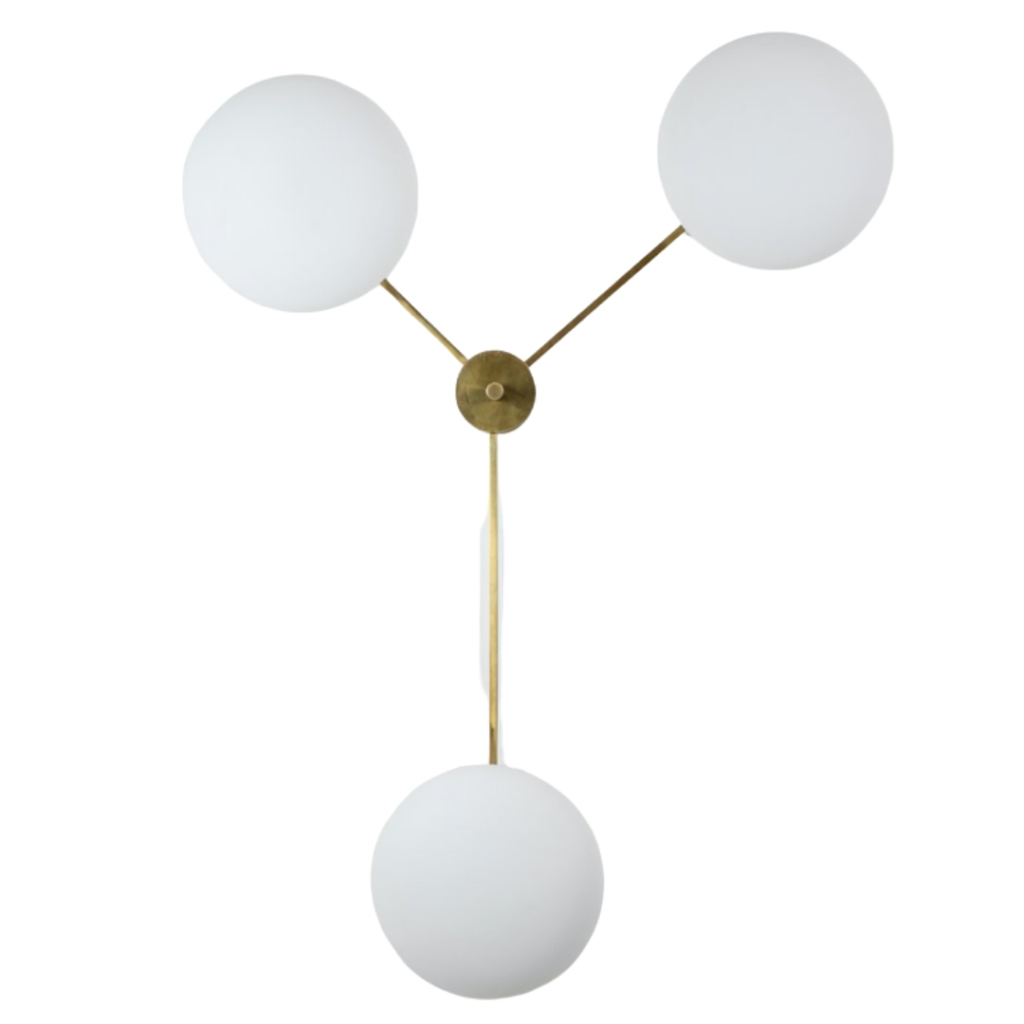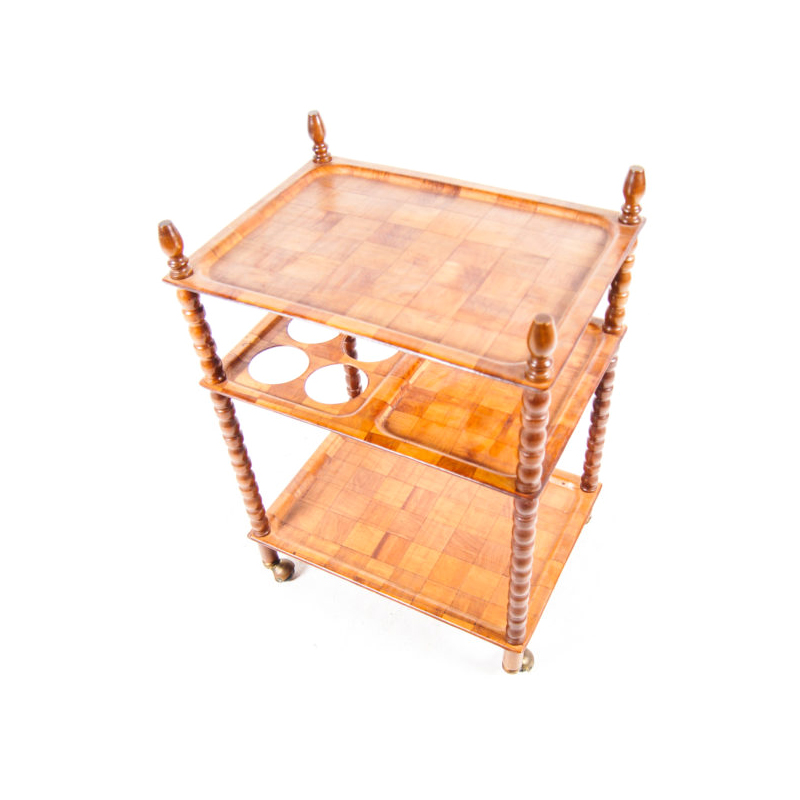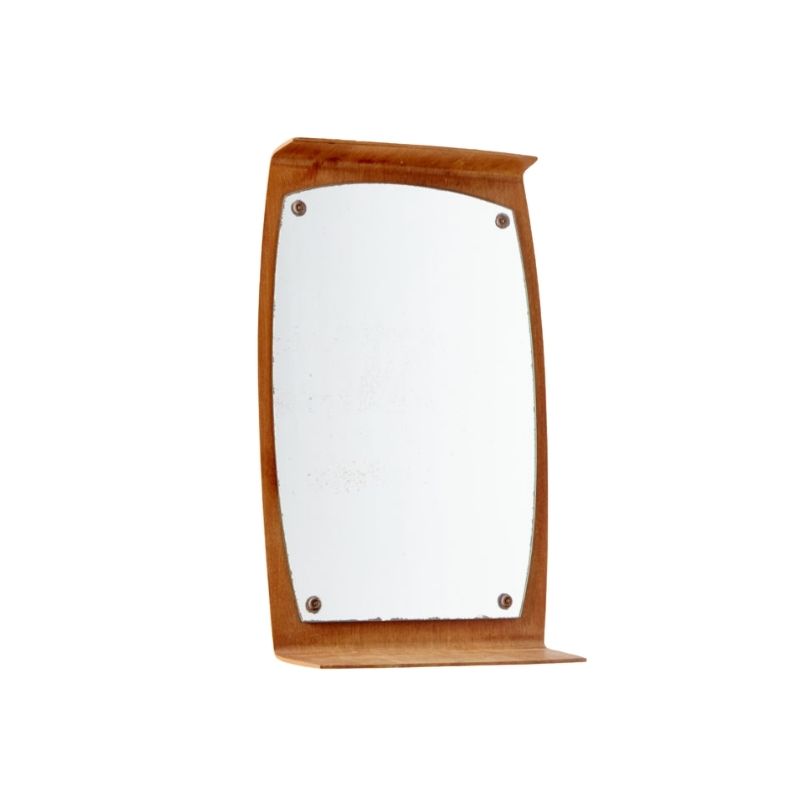Is it possible that traces of the original finish were not completely removed by stripping? You might try stripping it again, thoroughly, and try a dye instead of a pigment stain. Trying to match an original finish on oak, though, is tricky as oak tends to darken with age. Sometimes, refinishing the entire piece offers more even results.
Are you sure it was actually stained originally? That does not seem like something the Danes would have done. Could it have been fumed oak, or just naturally darkened oak? I sort of looks like your stain is trying to approximate the color of fumed oak.
Have you tried a methylene chloride based stripper, or just the weaker varieties of stripper?
Rustin indicates Strypit as dichloromethane (methylene chloride)-free. Try using a product that contains this chemical and follow safety guidelines as per instructions. If, after stripping thoroughly, water stains persist, treat with oxalic acid before staining.
Also, the grain of oak will often accept stain unevenly due to the difference in porosity/density/hardness between the "early" and "late" wood of its annular ring structure. It is possible to burnish or "glaze" the harder late wood by over-sanding with too fine a grit. I'd recommend not using steel wool or higher than P220 paper and, as mentioned, a dye rather than a pigment stain.
I suspect that the original finish was smoked and oiled oak. Oak was considered a appearance grade primary or secondary wood, generally. It was either either clear coat finished with an oil or lacquer or soap finished. And sometimes smoked/fumed to produce the aged brown color. Here is a little color swatch from Carl Hansen.
If it were mine I would do a fumed/smoked and oiled finish. You should be able to accomplish fuming without industrial strength ammonia; it will just take longer, or possibly require brushing the ammonia on. Google it.
http://www.carlhansen.com/media/532177/CH2014_UK_GUIDE_2_WOOD.pdf
If you need any help, please contact us at – info@designaddict.com











